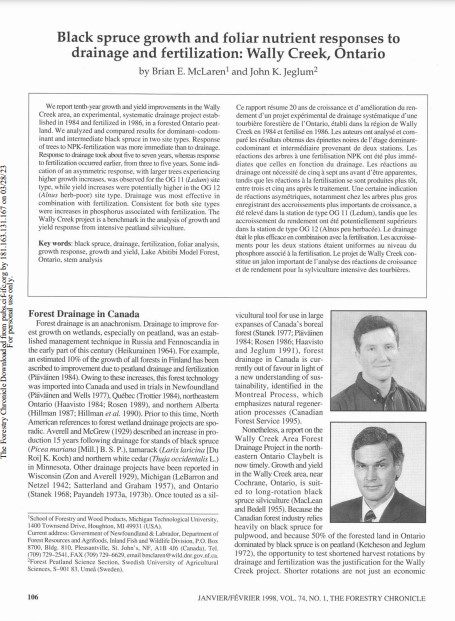Black spruce growth and foliar nutrient responses to drainage and fertilization: Wally Creek, Ontario
Bosque Modelo:
Lake Abitibi
Temática:
Economía sostenible
Tipo de documento:
Artículo científico
Resumen
We report tenth-year growth and yield improvements in the Wally Creek area, an experimental, systematic drainage project established in 1984 and fertilized in 1986, in a forested Ontario peatland. We analyzed and compared results for dominant–codominant and intermediate black spruce in two site types. Response of trees to NPK-fertilization was more immediate than to drainage. Response to drainage took about five to seven years, whereas response to fertilization occurred earlier, from three to five years. Some indication of an asymmetric response, with larger trees experiencing higher growth increases, was observed for the OG 11 (Ledum) site type, while yield increases were potentially higher in the OG 12 (Alnus herb-poor) site type. Drainage was most effective in combination with fertilization. Consistent for both site types were increases in phosphorus associated with fertilization. The Wally Creek project is a benchmark in the analysis of growth and yield response from intensive peatland silviculture
Información Bibliográfica
Autor:
McLaren, BE and JK Jeglum.
Revista:
Forestry Chronicle
Año:
1998
N°:
1
País :
Canadá
Páginas:
106 - 115
Volumen:
74
Idioma:
Ingles
Palabras claves
black spruce, drainage, fertilization, foliar analysis, growth response, growth and yield, Lake Abitibi Model Forest, Ontario, stem analysis





